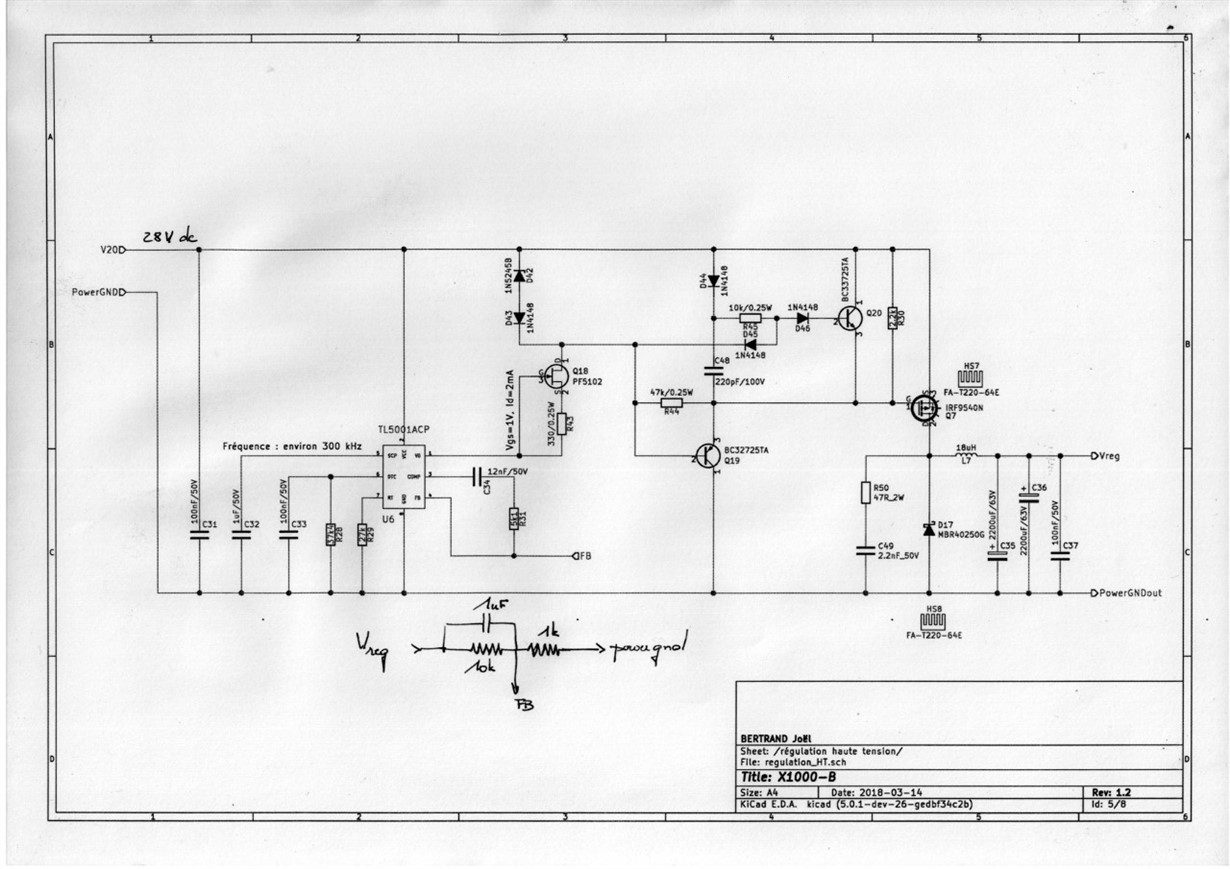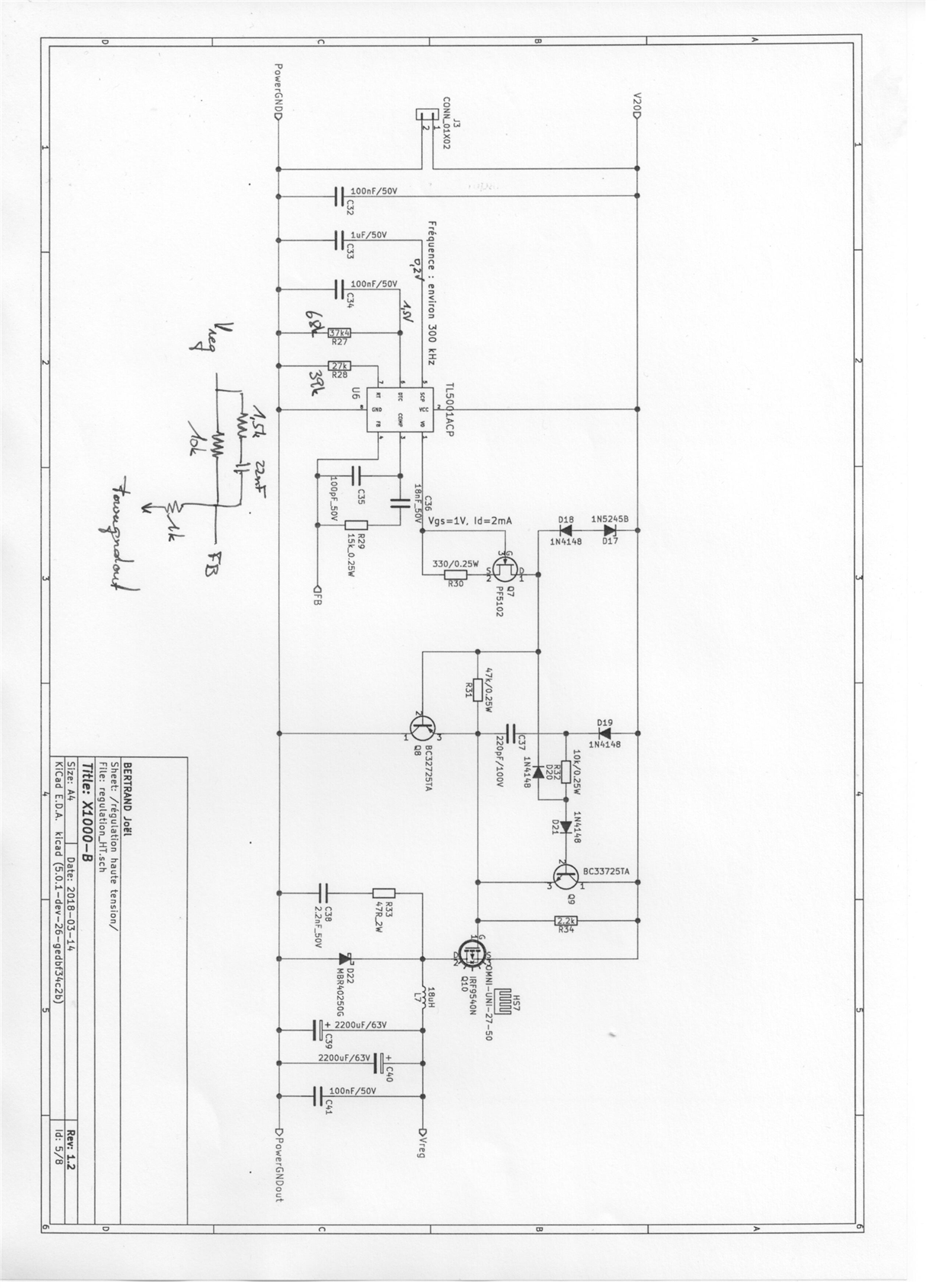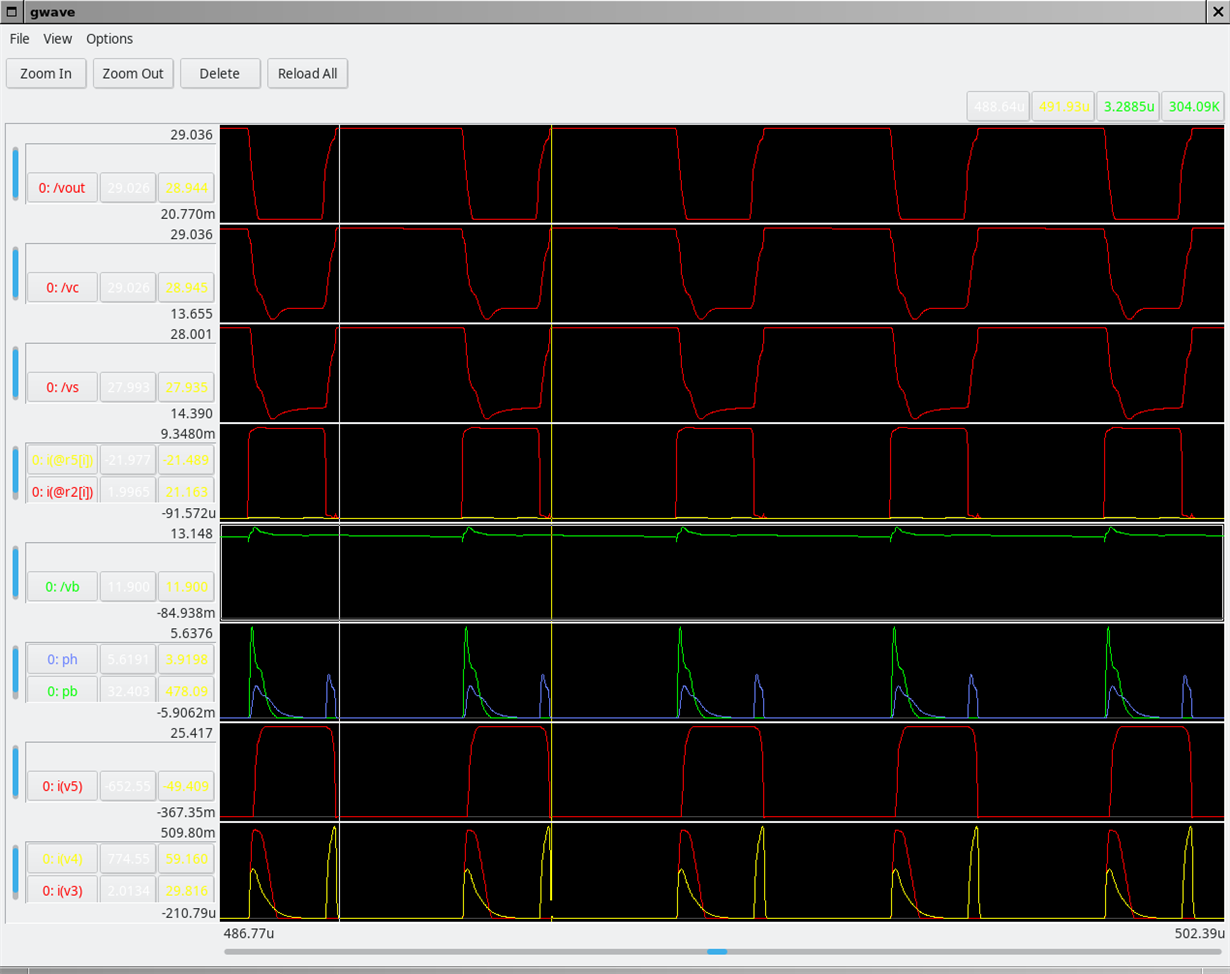Other Parts Discussed in Thread: TL5001
Good afternoon.
A few days ago, I was asking a question about a noisy self. I have done some tests and computed a snubber. Now, my schematic is :
I have added feedback divider by hand. I only use a simple divider with a capacitor.
Output power should be 200W (20A).
Whatever the output current, SCP signal remains greater than 1V. First diagram corresponds to a 100 mA output current :
First signal is output (11,5V). Second one is SCP signal. I have tried to modify C32 until 10µF without any result. Global efficiency is only about 65 % (!) when load consumes 6A.
Second diagram corresponds to a 6A output current :
Same constatations. SCP signal is too high.
I suppose I have done a mistake. In a first time, I don't understand why SCP signal is always greater than 1V.
Help will be welcome.
Best regards,
JB








